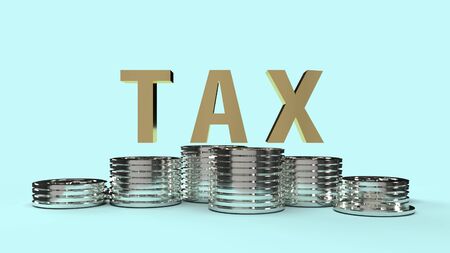Introduction to Green Tax Breaks
Making energy-efficient upgrades to your home isn’t just great for the environment—it can also offer significant financial rewards thanks to a range of green tax breaks available in the United States. Homeowners who invest in energy-saving improvements may be eligible for valuable federal and state incentives, including tax credits and deductions that help offset the cost of these projects. These programs are designed to encourage individuals to adopt eco-friendly practices by reducing their out-of-pocket expenses, making it more affordable to install solar panels, upgrade insulation, replace windows, or switch to high-efficiency heating and cooling systems. Whether you’re motivated by lowering your utility bills or contributing to a cleaner planet, understanding how these tax benefits work is the first step toward maximizing your savings on energy-efficient home improvements.
Common Residential Energy Credits
When it comes to green tax breaks, two of the most significant federal incentives for homeowners are the Residential Clean Energy Credit and the Energy Efficient Home Improvement Credit. Understanding these credits can help you make informed decisions about investing in energy-efficient upgrades for your home while maximizing your tax savings.
Residential Clean Energy Credit
This credit encourages homeowners to adopt renewable energy solutions by allowing them to claim a percentage of qualified expenses on their federal taxes. The most common qualifying systems include solar panels, solar water heaters, geothermal heat pumps, small wind turbines, and battery storage technology. As of 2024, the credit is valued at 30% of eligible costs and applies to both existing homes and new construction.
What Qualifies?
| Improvement Type | Eligible Costs | Credit Rate (2024) |
|---|---|---|
| Solar Electric Panels | Equipment & Installation | 30% |
| Solar Water Heaters | Certified Systems & Labor | 30% |
| Geothermal Heat Pumps | Qualified Units & Installation | 30% |
| Small Wind Turbines | Turbine & Setup | 30% |
| Battery Storage (3 kWh+) | Batteries & Labor | 30% |
Energy Efficient Home Improvement Credit
This credit targets smaller-scale upgrades that increase your homes energy efficiency. It includes improvements such as insulation, exterior doors and windows, central air conditioners, water heaters, furnaces, and heat pumps. Unlike the Residential Clean Energy Credit, this program typically covers a portion of costs up to annual or lifetime limits.
What Improvements Are Covered?
| Improvement Type | Maximum Annual Credit (2024) |
|---|---|
| Insulation Materials/Supplies | $1,200 |
| Energy-Efficient Windows/Skylights | $600 |
| Exterior Doors (per year) | $500 ($250 per door) |
| Certain Central A/Cs & Furnaces | $600 each |
| Heat Pumps & Water Heaters (qualified) | $2,000 each |
A Note on Eligibility and Documentation
The IRS requires that all equipment and installation meet specific energy-efficiency standards—usually ENERGY STAR® certification—and that homeowners retain manufacturer certification statements and receipts for tax filing purposes. Be sure to check current IRS guidelines or consult with a tax professional to ensure your project qualifies before making any major investments.
![]()
3. Deductions for Eco-Friendly Homeowners
For American homeowners looking to save money while making their homes more energy-efficient, federal and state tax deductions are a valuable tool. Unlike credits, which directly reduce your tax bill, deductions lower your taxable income, potentially placing you in a lower tax bracket. Common deductions for eco-friendly upgrades include those associated with installing solar panels, geothermal heat pumps, and certain high-efficiency home improvements like insulation or advanced heating and cooling systems.
Types of Deductible Upgrades
Eligible energy-saving systems often cover renewable energy installations such as solar photovoltaic (PV) systems, solar water heaters, small wind turbines, and geothermal heat pumps. Some states also allow deductions for the cost of weatherization—like upgraded windows or insulation—that enhances a homes overall efficiency.
Eligibility Requirements
To qualify for these deductions, the upgrades generally must be installed on your primary residence within the United States. The equipment should meet specific energy-efficiency standards set by the U.S. Department of Energy or other recognized agencies. Always check both federal IRS guidelines and your state’s Department of Revenue for current eligibility details, as requirements can change annually.
Documentation Tips
Keeping thorough documentation is essential for claiming deductions. Save all receipts, invoices, product certifications, and installation contracts. If you’re using a contractor, ensure they provide detailed records showing compliance with eligible efficiency standards. When filing your taxes, attach any required forms—such as IRS Form 5695 for residential energy credits—and retain supporting documents in case of an audit. Consulting with a tax professional familiar with green incentives can also help maximize your benefits and prevent errors.
4. How to Claim Green Tax Benefits
Taking advantage of green tax breaks for energy-efficient home improvements is a straightforward process if you follow the correct steps and use the appropriate IRS forms. Here’s a step-by-step guide designed to help U.S. homeowners claim these valuable credits and deductions on their federal tax return.
Step-by-Step Process
- Confirm Eligibility: Ensure your home improvements qualify for federal tax credits or deductions. Commonly eligible upgrades include solar panels, energy-efficient windows, insulation, and Energy Star-certified appliances.
- Gather Documentation: Collect receipts, manufacturer certifications, and any other documentation that shows the installation date, costs, and product eligibility.
- Identify the Correct IRS Form: Use IRS Form 5695 (Residential Energy Credits) for most residential energy-efficient property credits, such as solar or geothermal systems. For other deductions, refer to IRS instructions or consult a tax professional.
- Fill Out the Form: Complete Form 5695 with accurate information about your qualified expenditures. The form will calculate your total credit amount.
- Attach and File: Include Form 5695 with your annual federal tax return (Form 1040). If you’re using e-file software, it will prompt you through the process.
- Keep Records: Maintain all supporting documents for at least three years in case of an IRS audit.
Useful IRS Forms and When to File
| IRS Form | Description | When to Use |
|---|---|---|
| Form 5695 | Residential Energy Credits | For claiming credits on solar, wind, geothermal, fuel cells, and energy efficiency improvements |
| Form 1040 | Individual Income Tax Return | Main form for filing your federal taxes; attach Form 5695 if claiming energy credits |
| Form 4562 | Depreciation and Amortization | If rental property owners are claiming certain energy-related deductions |
Important Timelines
- TAX YEAR: Only improvements placed in service during the current tax year are eligible.
- TAX FILING DEADLINE: Typically April 15 of the following year (unless an extension is filed).
- LATE CLAIMS: Amended returns (using Form 1040-X) can be filed within three years if you missed claiming a credit previously.
Your Next Steps
If you’ve made qualifying green upgrades to your home, gather your receipts and start preparing your documentation before tax season. Consider consulting a CPA or enrolled agent experienced with energy credits if your situation is complex or if you own multiple properties. By following these steps, you can maximize your savings while making an environmentally responsible investment in your home.
5. State and Local Energy Incentives
While federal tax credits offer a strong foundation for saving on energy-efficient home upgrades, many states and local governments provide additional incentives that can significantly enhance your financial benefits. These programs often come in the form of rebates, property tax exemptions, or even additional state income tax deductions or credits. Because these incentives are designed to address local priorities—such as encouraging solar power in sunny states or supporting efficient heating in colder climates—they can vary widely depending on where you live.
Types of State and Local Benefits
Common state and local incentives include:
- Rebates: Upfront discounts or cash-back offers for installing qualifying equipment like heat pumps, insulation, windows, or solar panels.
- Tax Credits/Deductions: Some states let you claim a percentage of your installation costs on your state income taxes, similar to federal credits.
- Property Tax Exemptions: Certain energy improvements may not increase your assessed home value for property tax purposes, helping you save annually.
- Sales Tax Exemptions: In select areas, you might not have to pay sales tax when purchasing energy-efficient appliances or systems.
How to Find Programs in Your Area
The easiest way to discover what’s available is by using resources like the Database of State Incentives for Renewables & Efficiency (DSIRE). This comprehensive tool allows you to search by state and technology type. You should also check your state’s energy office website and your local utility company, as they frequently run seasonal promotions or offer special financing options for green upgrades.
Key Steps for Homeowners
- Research both federal and local programs before starting any project.
- Keep all receipts and documentation—state applications often require proof of purchase and installation.
- Pay attention to deadlines; some rebates are first-come, first-served or tied to annual funding cycles.
Maximizing Your Green Savings
By stacking federal, state, and local incentives, homeowners can dramatically reduce the cost of going green. Always verify current program details before making major purchases—rules change frequently, and new opportunities may emerge as communities ramp up their climate action goals. Taking a proactive approach ensures you won’t leave valuable savings on the table while making your home more sustainable.
6. Pro Tips for Maximizing Savings
Plan Ahead for Major Upgrades
Timing is everything when it comes to maximizing your green tax breaks. Before starting any energy-efficient upgrade, research current federal, state, and local incentives. Many credits and deductions have annual caps or phase-out dates, so scheduling your projects to align with these timelines can help you claim the maximum allowable benefits. For instance, spreading out improvements over several tax years may enable you to utilize credits that have yearly limits.
Bundle Projects Strategically
If you’re considering multiple upgrades—like solar panels, new windows, and efficient HVAC systems—consider bundling projects in a way that optimizes your eligible credits and deductions. Some programs require that improvements meet specific efficiency standards or be installed together to qualify. Check IRS guidelines and work closely with qualified contractors who understand how to document your upgrades for tax purposes.
Keep Thorough Documentation
Maintain detailed records of all expenses related to your energy-efficient improvements, including itemized receipts, manufacturer certification statements, and contracts. The IRS may request proof that your upgrades meet eligibility requirements. Proper documentation not only ensures a smoother tax filing process but also protects you if your return is ever audited.
Work with Tax Professionals
The U.S. tax code around green incentives can be complex and subject to change as new legislation is passed. Consulting with a tax professional who has experience with energy efficiency credits will help you navigate evolving rules and avoid missing out on savings opportunities. They can also identify state-specific programs or less-publicized incentives that further reduce your net investment.
Stay Informed on Policy Updates
Energy tax laws are frequently updated as part of federal efforts to encourage sustainability. Subscribe to IRS updates or reliable financial news sources to stay ahead of changes in credit amounts, eligibility criteria, or application procedures. Acting quickly when new incentives roll out can mean the difference between qualifying for a substantial rebate or missing the window altogether.
7. Resources for Homeowners
If you’re ready to explore green tax breaks and energy-efficient upgrades for your home, accessing the right resources is crucial. The following official websites, hotlines, and directories provide up-to-date information, eligibility guidelines, and application support for federal, state, and local incentives in the United States.
Official Government Websites
- Energy Star: energystar.gov/about/federal_tax_credits — Offers comprehensive details on current federal tax credits and qualifying products.
- U.S. Department of Energy (DOE): energy.gov/savings — Provides an interactive database of residential energy efficiency incentives by state.
- IRS: Credits & Deductions: irs.gov/credits-deductions-for-individuals — Official guidance on claiming energy-related tax credits and deductions.
State and Local Incentive Directories
- DSIRE (Database of State Incentives for Renewables & Efficiency): dsireusa.org — The most comprehensive directory of state, local, utility, and federal incentives for renewable energy and efficiency upgrades.
- Your State Energy Office: Most states have dedicated offices with websites that detail regional programs and rebates. You can find yours at energy.gov/eere/state-energy-offices-and-organizations.
Trusted Hotlines and Support Services
- ENERGY STAR Hotline: 1-888-782-7937 — For questions about qualified products or tax credit eligibility.
- IRS Taxpayer Assistance Center: 1-800-829-1040 — Guidance on how to claim credits or file related forms.
- DOE Energy Efficiency Information Center: 1-877-337-3463 — Answers about federal efficiency programs and referrals to local resources.
Tips for Using These Resources
- Always confirm that the incentive or credit you’re interested in is currently active before starting a project.
- Keep detailed documentation—receipts, manufacturer certifications, permits—when preparing to claim any energy-related tax break.
- If unsure about your eligibility or paperwork requirements, don’t hesitate to call the provided hotlines or consult with a qualified tax professional familiar with green incentives.
Navigating Incentives with Confidence
Tapping into these trusted resources ensures you’re making informed decisions and maximizing available savings as you invest in a more energy-efficient home. Stay updated, ask questions, and take full advantage of America’s growing commitment to sustainable living through smart tax planning.


